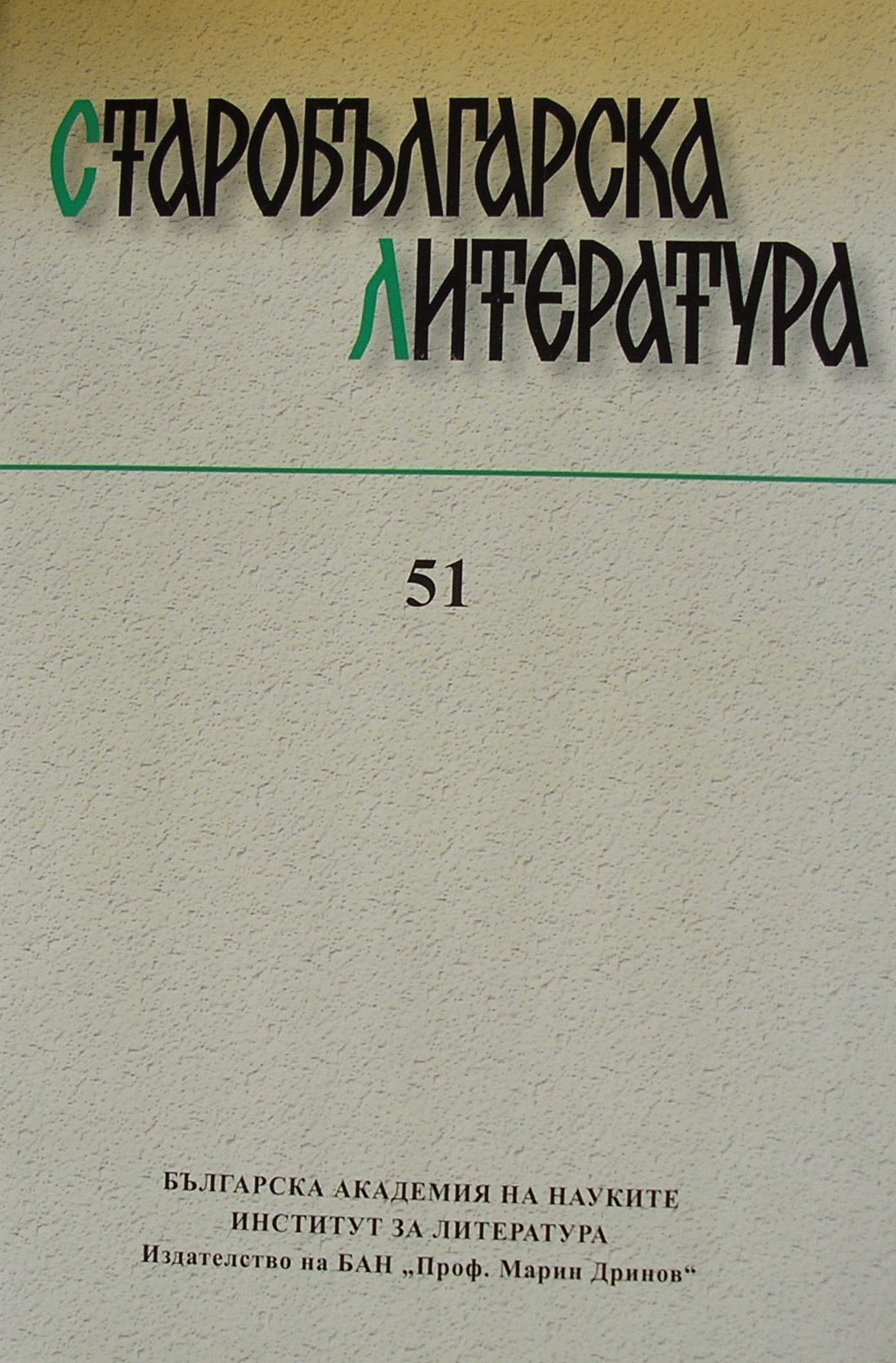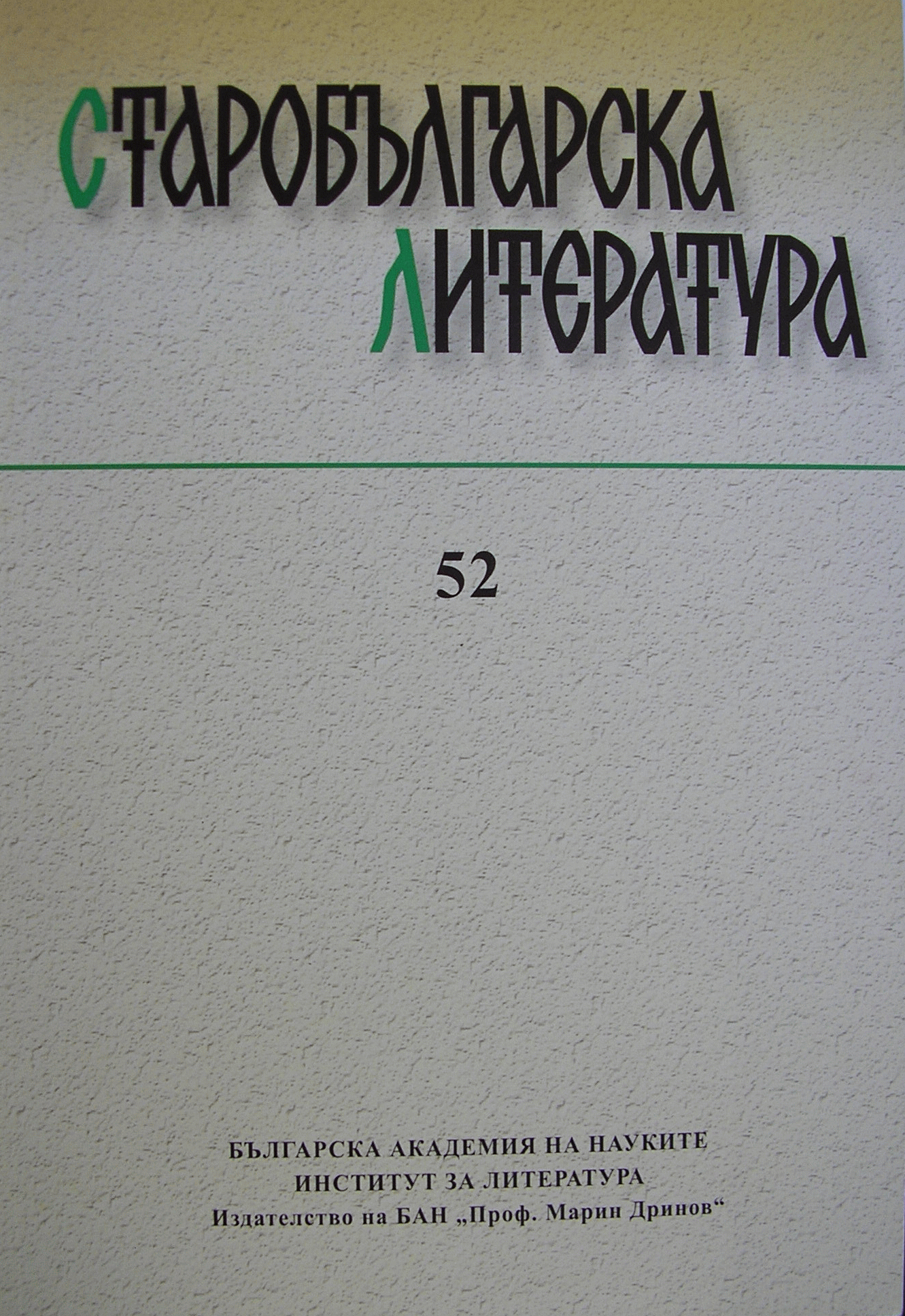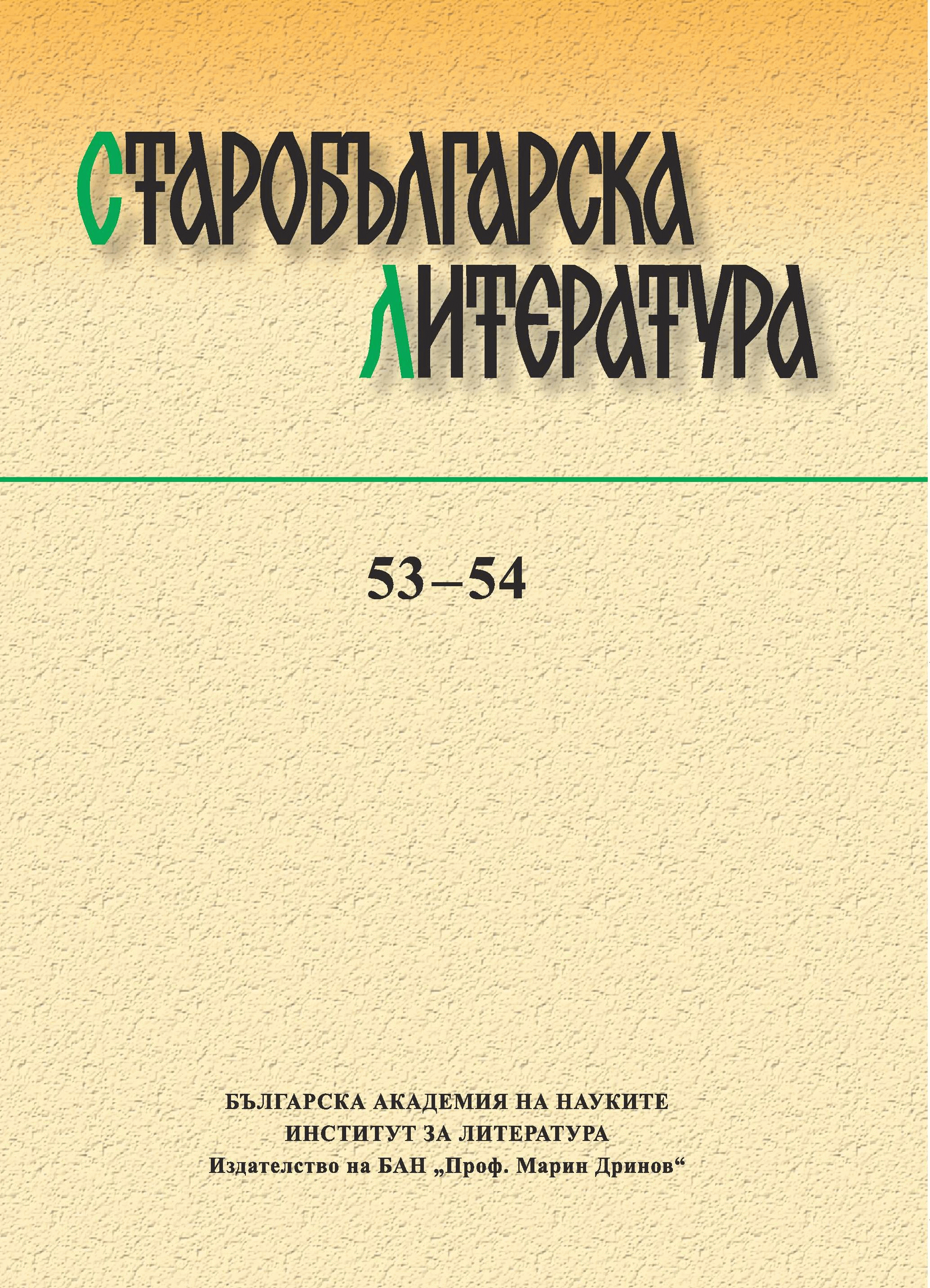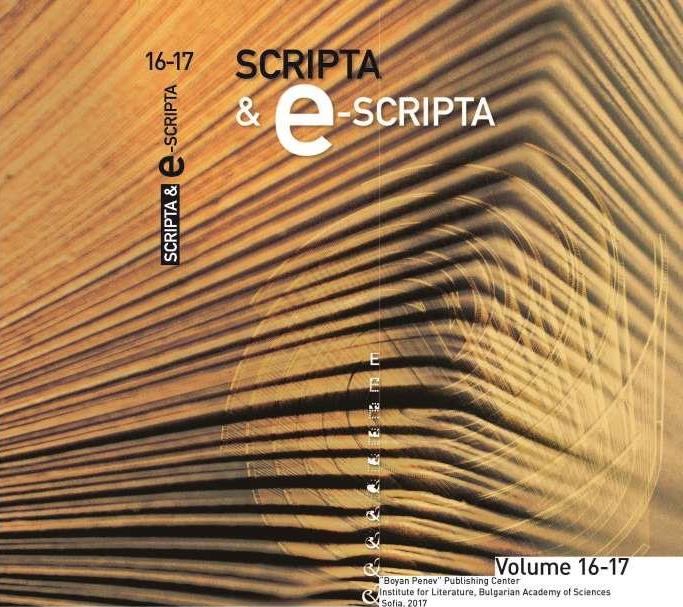
We kindly inform you that, as long as the subject affiliation of our 300.000+ articles is in progress, you might get unsufficient or no results on your third level or second level search. In this case, please broaden your search criteria.


St. Mark the Ascetic (4th century) is one of the most famous Egyptian anchorites. His writings are often included in monastic collections in both the Byzantine and Slavic traditions. The Epistle to Nicholas is particularly popular because it explicates the rules for an ascetic life. The earliest Old Church Slavonic translation dates from the 10th century and is preserved in a miscellany from the Hilandar monastery No. 382 from the 13th–14th century. While part of the corresponding folia in the Hilendar codex has been lost, MSS 72 (14th c.) and 310 (16th c.) from the Library of the Rumanian Academy (Bucharest), which go back to the same group of manuscripts, allow us to reconstruct the archetype. The selective translation adapted from the Greek original illustrates well the work of the medieval Bulgarian bookman. In the 14th century, a new version of the same text was created in Bulgaria, as attested in MSS Hlud 237 and Vienna 42, which was the result of a new collation of the Old Bulgarian translation with the Greek text. The Slavonic tradition of this text is an example for the existence of multiple translations and versions of one and the same work in old Slavic florilegia.
More...
The atricle addresses the canons for the Bodiless Powers that appear in the Menaion for the feasts under November 8 (Synaxis of Archangel Michael and the Other Bodiless Powers), September 6 (The Miracle of Archangel Michael at Chonae), March 26 (Synaxis of the Archangel Gabriel), and July 13 (Synaxis of the Archangel Gabriel). We examine the Slavonic translations of these Greek works made in a Slavic milieu and the transmission of their manuscripts. Special attention is paid to the only two original Slavonic canons that are known to scholars to date: the anonymous Просвѣщьи древле ѹмꙑ and the canon by Constantine of Preslav, Припадаѭща мѧ боже приими щедротами си. The data for each individual work – its manuscript tradition, the extent of preservation and substitution of strophes from other canons work – allow us to draw conclusions about the time when the Greek canons were introduced into the Slavonic context and the way the original works were disseminated immediately after their composition work – a time from which we have no direct manuscript record.
More...




Ms. Sl. 156 (RA156) is an extensive Pentecostal Panegyric which includes texts from Holy Week through the Sunday of All Saints. The manuscript is incomplete, but its largest lacuna has been filled up from a miscellany of fragments in the collection of P. A. Shchukin, the State Historical Museum in Moscow. The fifth fragment of Shchuk 369 (Shchuk 369/V), located on Fol. 56r-68v according to the general foliation of the textual body, comprises folia that have been extracted from two different parts of a single jer manuscript. The first group of texts is related to Thomas Sunday (10 fol.), the second to Ascension (3 fol.). The manuscript dates from the 1320s-1330s. It has no jers and was written on Mt. Athos, then evidently transported to Romania by Paisii Velichkovski. This codex reveals a notable correlation between the orthography and the arrangement of the texts within each cycle of feasts, which sets it apart from other known South Slavic panegyrica and suggests that there could have been more than one protograph of the Pentecostal Panegyric.
More...
This paper proves that Jan Hus and Constantine Kostenečki—two refromers of the early 15th c. whose activities seem to be rather similar at first sight—had completely different approaches to the language question. Jan Hus was a pioneer in his fight to introduce the Czech language as a language of the Holy Scriptures, whereas Constantine Kostenečki strived to reform a written language with more than a five-century long history. Unlike Hus, who according to the extant sources hardly knew anything about Serbia, Constantine had enough information about the Hussite movement and the political situation in the Czech lands, since his sovereign, despot Stefan Lazarevič, was a vassal to the Hungarian King, Holy Roman Emperor Sigizmund, and took part in the anti-Hussite military campaign of 1421. And even though Constantine created the norms of Resava School which for centuries influenced the Orthodox written tradition while Hus’s ideas came to fruition only after his death, Constantine Kostenečki remained deeply rooted in the Middle Ages whereas Jan Hus came to be seen as a precursor of the Modern Age.
More...


The paper discusses the translation of Ἄρειος πάγος into Slavonic, which until the late seventeenth century is almost invariably Аріевъ ледъ. It is suggested that although this does not correctly render the original meaning of the Greek, translators (and others, including their Greek contemporaries) did not necessarily perceive place names as literally meaningful. Аріевъ ледъ was thus simply the established Slavonic name for the Areopagus, and known as such to Slavonic writers. The principle place where it occurs is in the Acts of the Apostles, where it is used consistently, and there is a varied body of commentary in Slavonic attached to this passage, which is discussed in detail. The use of the toponym in a number of non-Biblical texts is also traced.
More...
This paper analyzes two translation choices in the earliest Slavonic version (translation from Greek – from the Septuagint – into Old Bulgarian literary language/ Old Church Slavonic) of the Song of Songs that might have been influenced from the Vulgate as supposed by A. A. Alekseev. This paper suggests two other explanations of these choices: influence of the Christian exegesis and specifics of the language of the translation.
More...
The Vita of St Ivan Vladimir, the first Serbian saint, is contained in the so- called Chronicle of the Priest of Dioclea, also known as Gesta Regum Sclavorum. The aim of this paper is to examine one of the more interesting aspects of the Vita: the image of the Bulgarians, Serbs and Byzantines during the troubled times of the Byzantine-Bulgarian war of 976–1018. The picture that emerges from the Life of St Ivan Vladimir holds many surprises for the modern reader and is contradictory to our own perceptions of the two protagonists of the era, Samuel and Basil II.
More...
This study seeks to trace out the structure of the Book of Prophet Isaiah with commentaries and to explore what that structure reveals about the text in some manuscripts of the East Slavonic and South Slavonic traditions. There are three conclusions made as a result of the present study. Firstly, the analysis of the structure and the identification of the readings in Catena Slavonica in Isaiam shows a translation of a catena which occupies an intermediate position between the Catena in Isaiam by John Drungarios and the one by Andrew the Presbyter whichever is the earliest. The CSI resembles both. Secondly, the value of the CSI should not be underestimated, because it includes a translation of scholia by Theodulus whose work is now almost entirely lost. Therefore the CSI could provide new evidence for the content of the lost Byzantine original of Theodulus’ Commentary on Isaiah. Thirdly, the comparison of the numerals in the margin of РНБ F.I.461 with the sequence and number of the biblical pericopes and relevant scholia in the Russian manuscripts clearly and unequivocally demonstrates that although F.I. 461 is the earliest evidence of Preslav translation in a Tărnovo redaction, it is still a single link in the chain of the Slavonic tradition and has a many shortcomings compared to the CSI in the Russian tradition.
More...
This article offers textological observations on the Parable of the Unicorn, which is an integral part of the medieval Story of Barlaam and Josaphat. For the purpose, manuscripts that contain the entire work are examined, as well as manuscripts which are part of anthologies of compound content. The aim is to verify the correlation between the complete and the singular traditions of the novel’s dissemination, as well as their relations with the Byzantine text.
More...
The Service of St Alexander Nevsky was written by Monk Michael of the Roždestvenskij monastyr’ (Nativity monastery) in Vladimir. He was one of the writers, belonging with the circle of Metropolitan Macarius, who composed princely services (and sometimes vitas) for new Russian saints. Most of the services are compilations of verses and hymns and more or less exact borrowings (and sometimes compositions according to models). In the Service of St Alexander Nevsky, the most refined of Monk Michael’s works, the hymnographer utilized various models to combine them into one canon, thus giving it the colour of an original work. It is important to add that Monk Michael used Slavic translations instead of original Greek texts, a fact proved by textological comparison. The service, dedicated to a saint prince, canonized in the sixteenth century, was the only one included in the Menaion. Together with the especial respect and veneration of the new saint, it was one of the reasons why his service became a model of other princely services. It is worth noting that instead of hymns, originally borrowed for the new service, exactly the adapted hymns to St Alexander were taken as standard for princely services, thus allowing a double reception of the translated hymns. For the purpose of the investigation the author analyzes the services of St Roman of Ugleč, St Daniel of Moscow, the Service of Finding of his Relics including, as well as the service to St Dowmant of Pskov.
More...
This article discusses the presumable composition of the Service for the Heavenly Bodiless Angelic Powers, which was included in the Old Bulgarian Menaion under the date of 8 November and has no Greek parallel. Taking into account the fact that there are two known kanons of probable Old Bulgarian origin, the author searches in various manuscripts for the rest of the chants that, according to the liturgical rules, might have been part of the service.
More...
The author introduces a new (previously unknown) parchment fragment (one leaf) of the Full Gospel lectionary from the Library of the Hosianum Seminary of the Archdiocese of Warmia in Olsztyn (Poland). The article presents a concise description and a general characteristic (with textological analysis) of the fragment along with its publication (with three photos). Cyrillic fragment of the Gospel manuscript, which was used together with Latin one to bind several early printed Latin books, is dated to the end of fourteenth or beginning of fifteenth century, but not later than the year 1420. The article presents also a short history of the Library of the Hosianum Seminary as far as it concerns the history of the Cyrillic Gospel fragment.
More...
The publication summarizes the experience gained in the preparation of bilingual indexes in palaeoslavistics, formulates some specific problems arising in the work on them and identifies future tasks in the development of this line of research.
More...